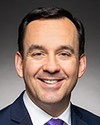I think the first stage we look at is really this project identification. The community would typically engage a technical consultant to flesh out what their needs are and to look at what are feasible solutions to meeting their needs, and then develop a scope of project. Once they have completed what would be a fairly preliminary feasibility study for their project.... We run annual rounds of applications, so we would get an application that would say they were looking at pursuing a water treatment plant that's going to have this much capacity, and initial figures are that it's going to cost $75 million and they're interested in pursuing a private partner to develop that as a DBFM.
When they come to us, again it's at that preliminary stage, if they were screened in—we have narrow criteria where we screen in projects based on a level of intensity, the readiness, and the potential for that to deliver value—we would work with the first nation to basically engage more financial advisers to develop and look at the business case, to look at the risk profile, to look at the economics of the project, to see if it can achieve value for money.
In parallel, they would continue their development work, looking at fleshing out a representative project on about a 25% to 30% design basis, and to solidify more of their costs. Typically, we will end up having, at the time that we make an investment decision, 25% design. We'll have a schematic design. We'll have schematic cost estimate. We'll have plus or minus 15% certainty on the cost side, while the business case that shows the risk profile of the project will talk about the interest of the market.
We'll do market soundings to make sure the market is interested in pursuing that project and we know we have something that is feasible and we have the technical solution. At that point, we'll make an investment decision. We make a recommendation to the Minister of Finance. If he approves, then we will work to move to the procurement phase.
Looking at the next phase, we work with the first nation to implement a two-stage procurement process. That would start with a request for qualifications, where we would look to find the best partner based on their past experience in designing typical projects, constructing them, operating them, maintaining them, financing. Typically, you qualify three firms, or three consortia comprised of teams that can provide all of those functions. That's usually about a two-month process.
Once you've short-listed your two-month process, we would give a draft contract project agreement and a request for proposals to the partners, which would really give out more detail of the nature of the performance that we're seeking from the partner, the risk allocation that we're looking for. We'll have an open period where we'll have a dialogue called “commercially confidential meetings” with each of the partners separately, to really explain what the intent is, the performance we're looking for, and the risk allocation.
After that period of dialogue has taken place, we'll fix the contract and they will come back with a proposal that will provide their version of a 30% design, with a whole series of plans of how they intend to staff the plant, run the plant, look after safety, look after different considerations that may have been in there in terms of environmental considerations, land use issues, anything else in terms of.... We have seen, for instance, in the Iqaluit airport project, a strong need to have Inuit participation in that project, so there would be elements of that. They'll have to have a plan as to how they're going to involve local members in the project.
Finally, you will have an evaluation where you'll look at whether they have a technically feasible solution and who, ultimately, gives us the best price.



